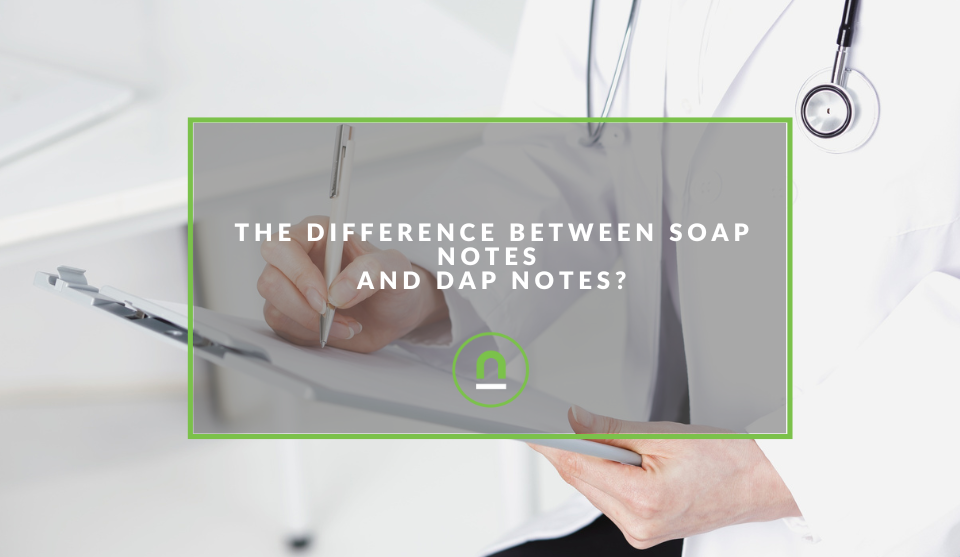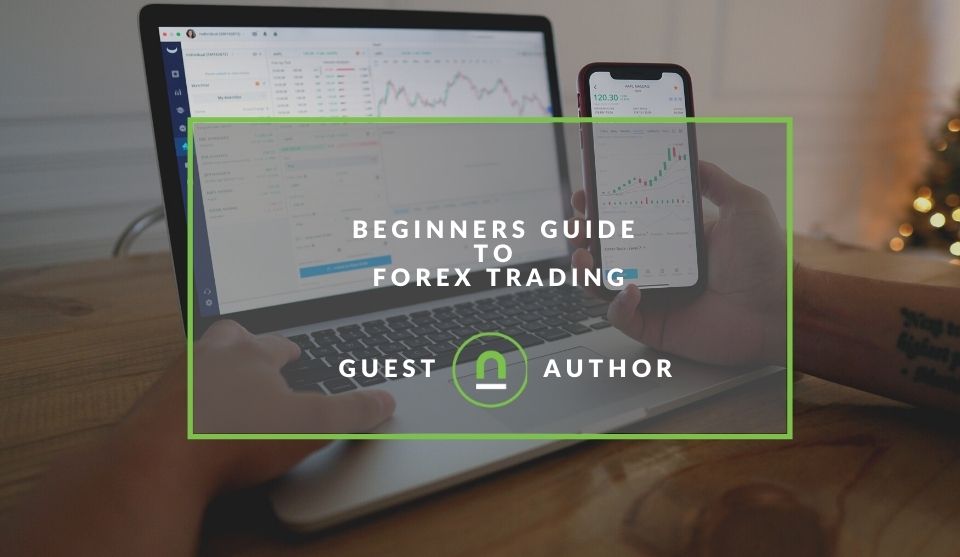Recent posts

nichemarket Advice
The South African VAT Threshold Chokehold
05 December 2025

Doctors Orders
The Difference Between SOAP Notes and DAP Notes
02 December 2025

Petrol heads
Why Load Bin Accessories Make Your Bakkie So Much Easier to Live With
26 November 2025

Alarming
What Is The Part Time Job WhatsApp Scam?
25 November 2025
Popular posts
Extravaganza
Trending Music Hashtags To Get Your Posts Noticed
24 August 2018
Geek Chic
How To Fix iPhone/iPad Only Charging In Certain Positions
05 July 2020
Extravaganza
Trending Wedding Hashtags To Get Your Posts Noticed
18 September 2018
Money Talks
How To Find Coupons & Vouchers Online In South Africa
28 March 2019
Beginners Guide To Forex Trading
05 January 2022 | 6 comments | Posted by Cornelia Ekong in Money Talks
Forex trading might be challenging for newcomers with so many technical terms to grasp and trading strategies to review. In addition, there seems to be an unreasonable yet frequent expectation among newbies in this industry that it is easy money, which is far from the truth. If you are considering Forex as a trading vehicle and want to get started or simply want to get an understanding of what is involved in it and what the terms forex traders use are, then this post will help you as a jumping-off point.
Make no mistake, this is not a forex trading tutorial for beginners, merely an introduction to the sector.
So let's start!
What is Forex Trading?
The foreign market is a worldwide market, where dealers trade national currencies. The second question that everybody has is, "How can I study Forex from the ground up?" Can I learn to trade Forex on my own? Don't worry. Our Forex trading for newbies guide is a comprehensive introduction to Forex and basic trading elements.
Forex Trading for Beginners: Trading Terminology
This is where you may start with your Forex trading guidelines for newbies. I'm going to start my trading for newbie's guide by giving many of the most common trading words that you'll need to know.
Spot forex
This kind of Forex trading is purchasing and selling actual currency. For example, you may buy a particular amount of national currency and exchange it for dollars; then, when the value of the dollars rises, you can convert your dollar for currency again, gaining more money than you paid for the transaction.
CFDs
CFD is an abbreviation for "Contract for Difference." This is used to reflect the movement of financial product prices. Forex terminology implies that rather than purchasing and selling significant sums of money, you may profit from price swings without owning the item itself. CFDs are accessible in equities, indices, bonds, commodities, and cryptocurrencies in addition to Forex. They all enable you to exchange the price fluctuations of these assets without acquiring them.
Spread
The spread is the difference between a currency pair's buy and selling price. The spread on the most popular currency pairings is often modest, often less than a pip! The spread is often substantially wider for less frequently traded pairings. Before a Forex deal is lucrative, the currency pair's value must be greater than the spread.
Margin
Margin is the amount kept in the trading account when a deal is opened. Due to a shortage of capital, "Retail Forex Traders" often have recourse to leverage to trade high enough volumes to make a reasonable profit.
Leverage
This principle is essential for new Forex traders. Leverage is the money offered by a Forex broker to its clients to boost the number of transactions they may make.
Broker
A broker is a person or corporation that helps you purchase and sell an instrument via their system (in the case of an online broker). Typically, they charge fees.
Bid
The bid is the price per share that traders are ready to pay. It is calculated against the asking price, which is when sellers are prepared to sell their shares. What is the term for the difference between the asking price and bid? The spread.
Exchange
This is a place where deals are formed. The NASDAQ and the New York Stock Exchange are two well-known stock exchanges (NYSE).
Bear market
The stock market is referred to as being in a downtrend when this word is utilised. Put another way, when the stock market is losing ground, When the price of a stock drops rapidly and sharply, it is deemed very bearish.
Bull market
A bull market is the polar opposite of a bear market. For example, when stock prices increase, we call it a Bull Market. Both stock and a sector may be characterised as bullish or bearish.
Beta
A statistic that shows how a stock's price moves in comparison to the industry as a whole. Whenever the market moves one point, the stock with beta 1.5 moves 1.5 points.
Close
This is the point at which trading on an exchange comes to an end. On the NASDAQ and the NYSE, actual trading hours are between 9 a.m. and 4:30 p.m. Eastern time on weekdays. Trade after-hours resumes till eight o'clock p.m.
Day trading
Here, traders purchase and sell inside a single trading day. Day trading is a popular method for making money in the stock market. Day traders, on the other hand, may create long investments.
How to trade in the forex market for beginners?
Before making a trade, you must determine whether to go short or long, how much that will cost you, and how wide the spread is on that particular transaction. You can make a better trading decision if you know these aspects. Each of these features is described in depth in the sections that follow.
Long trade
An investment strategy is where one buys a currency and sells it at a profit, hoping that its value will rise.
Short trade
One way to make money is to sell money and then purchase it back at a lower price, making use of the difference in value.
How to read forex charts?
Traders using the Meta Trader platform may choose between three distinct chart types when looking at current currency exchange rates: line charts, bar graphs, or candlestick charts. Switch between the various chart formats in Meta Trader by choosing View -> Toolbars -> Standard. A new box will appear in the upper-right corner of your screen:
Line chart
When looking at a line chart, you can see how the closing prices of the period you're examining are linked together. When looking at a daily chart, the closing price of each trading day is connected by a line. Traders almost exclusively use this chart format. In contrast to other chart styles, this one is primarily used to detect larger-scale patterns, but it doesn't give much more.
OHLC bar charts
Each bar on an OHLC bar chart represents a different period being viewed by the trader. Each vertical bar on a daily chart indicates one day of trade. Unlike the line chart, the bar chart provides additional information like the bar's open, low, high, and close values.
Candlestick charts
The first people to utilise candlestick charts were Japanese rice dealers in the early 1800s. Identical to OHLC bars, they provide open, high/low/close values for a certain time period. Nevertheless, the open/close price values are separated by a box in candlestick charts. The 'core' of the candle is also referred to as this.
Finding your feet in Forex
Don't worry if you don't grasp all the concepts from the beginning; try to read over them again find more in-depth content on each of these trading terminologies until you become familiar with them. Some of you may prefer learning from reading while others may prefer forex training videos instead. Regardless of the method you use, focus your early stages on learning as much as you can before you start taking any positions in the market.
Tell us your story
Would you like to write for nichemarket just like Cornelia has? Find out how to submit a guest post, and when you're ready, you can contact us.
Tell us your trading story.
Have you started to try and improve your savings by trading in the options market? How is it going? Do you have any tips you feel should be added to the list? Share it with us in the comments, and let's help South Africans save even more.
Do you seek financial help?
Find a financial advisor or financial consultant in your area
Get started with nichemarket
If you are a financial adviser and would like more leads, why not list your business with nichemarket. Registering with nichemarket is easy; all you will need is head over to our sign up form and follow the instructions. If you require a more detailed guide on how to create your profile or your listing, then we highly recommend you check out the following articles.
Recommended reading
If you enjoyed this post and have the time to spend diving deeper down the rabbit hole, then we suggest you check out the following posts about improving your finances in South Africa.
- How South Africans Can Save Money Each Month
- The Pros and Cons Of Tap and Go Cards
- What Is A Money Market Account?
- Ways To Earn Cryptocurrency
- How To Passively Earn Cryptocurrency
- Types Of Cryptocurrency Exchanges
- How South Africans Can Buy Bitcoin
Disclaimer: This is not investment advice and is for informational purposes only. nichemarket cannot be held liable for any investment decisions made based on the information given by independent financial service providers. Under the ECT Act and to the fullest extent possible under the applicable law, nichemarket disclaims all responsibility or liability for any damages whatsoever resulting from the use of this site in any manner.
Tags: Forex, Trading, Guest Post
You might also like
Maximising Business and Trading Opportunities Through Smart Online Strategies
07 November 2025
Posted by Marcus Nord in Money Talks
This article aims to outline for entrepreneurs, SMEs, and individual traders how better outcomes might be achieved through well-designed online strat...
Read moreWhat Is The Part Time Job WhatsApp Scam?
25 November 2025
Posted by Che Kohler in Alarming
A deep dive into the scheme behind all these random WhatsApp invites or Telegram chats offering you part-time remote work that pays you out instantly...
Read more{{comment.sUserName}}
{{comment.iDayLastEdit}} day ago
{{comment.iDayLastEdit}} days ago
 {{blogcategory.sCategoryName}}
{{blogcategory.sCategoryName}}

